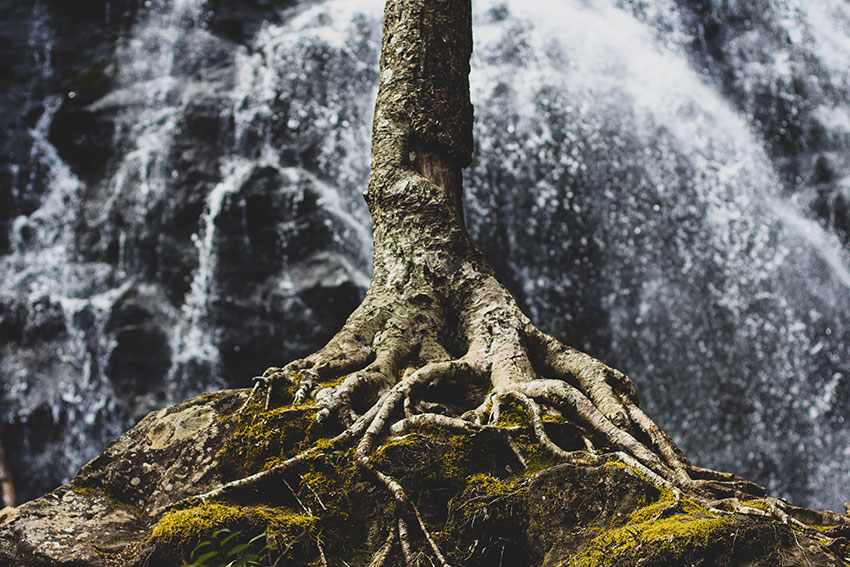by Sharon Asakawa

"Out of sight, out of mind" is a truism when it comes to roots.
Clogged sewer systems, heaving paved surfaces and cracked wall footings can be the work of invasive roots, but it happens so gradually that their potential hazards are ignored until the damage is done.
What about barriers for confining a tree's root system?
There are two reasons why barriers are only temporary, stopgap measures. Where soil moisture is limited, many tree species develop deep taproots that probe downward for moisture and nutrients while stabilizing the trees’ structures. They also develop lateral roots that grow horizontally, at different depths, away from the taproot. The depth of each lateral root remains constant and is known as plagiotropism. To put it simply, when a horizontal root encounters an obstruction such as a boulder, the root growth is deflected up or down, but will eventually attempt to regain its original depth. Another phenomenon, exotropism, means that if the roots are deflected by an obstruction, it will eventually continue their growth in the same original compass direction.
Also, roots will not move into soils that are lacking air or moisture, which explains why the vast majority of a tree’s roots are concentrated in the top three feet of soil and the most important absorbing roots are concentrated in the upper levels of the soil.

Mycorrhizae (from the Greek words for fungus and root) is a general term describing a symbiotic relationship between a soil fungus and plant root.
Unlike rhizobia and their legume partners, mycorrhizal associations are ubiquitous and relatively nonselective, occurring in over 80% of all plants. Although parasitic and neutral relations exist, a majority of these associations are beneficial both to the host plant and the colonizing fungi. Mycorrhiza assist plants in obtaining water, phosphorus and other micronutrients (e.g., Zn and Cu) from the soil and in return receive sustenance (carbon) from the plant.
